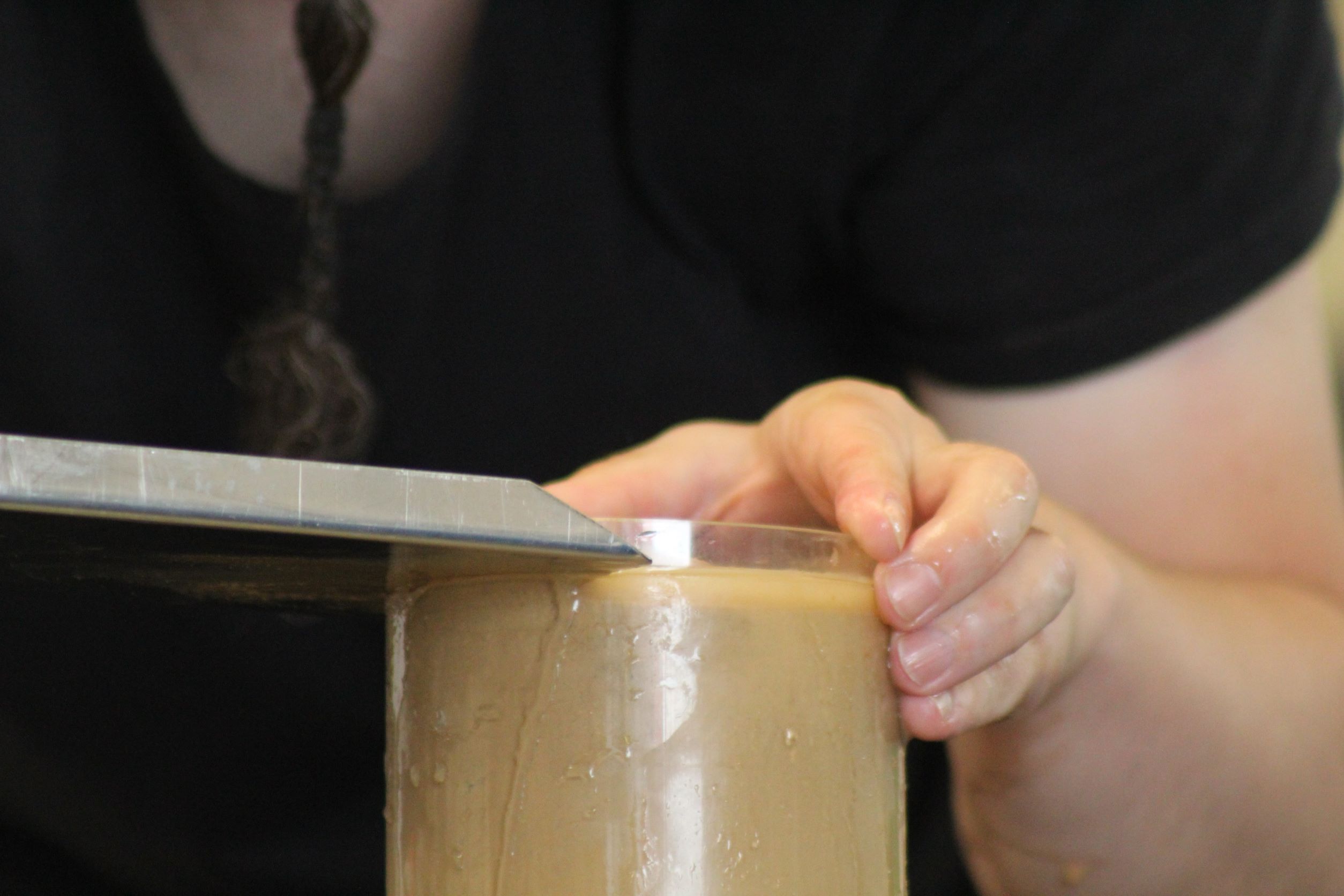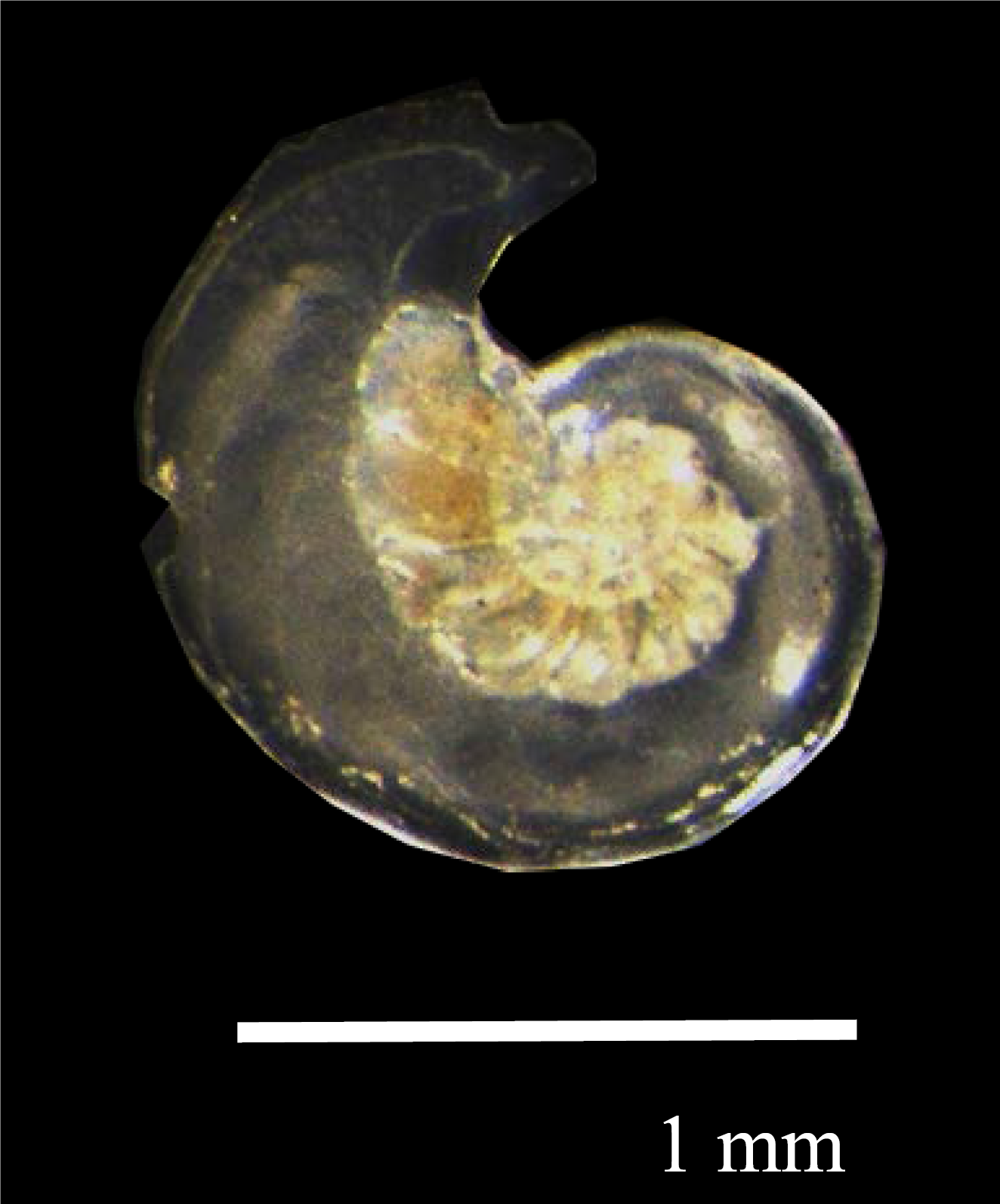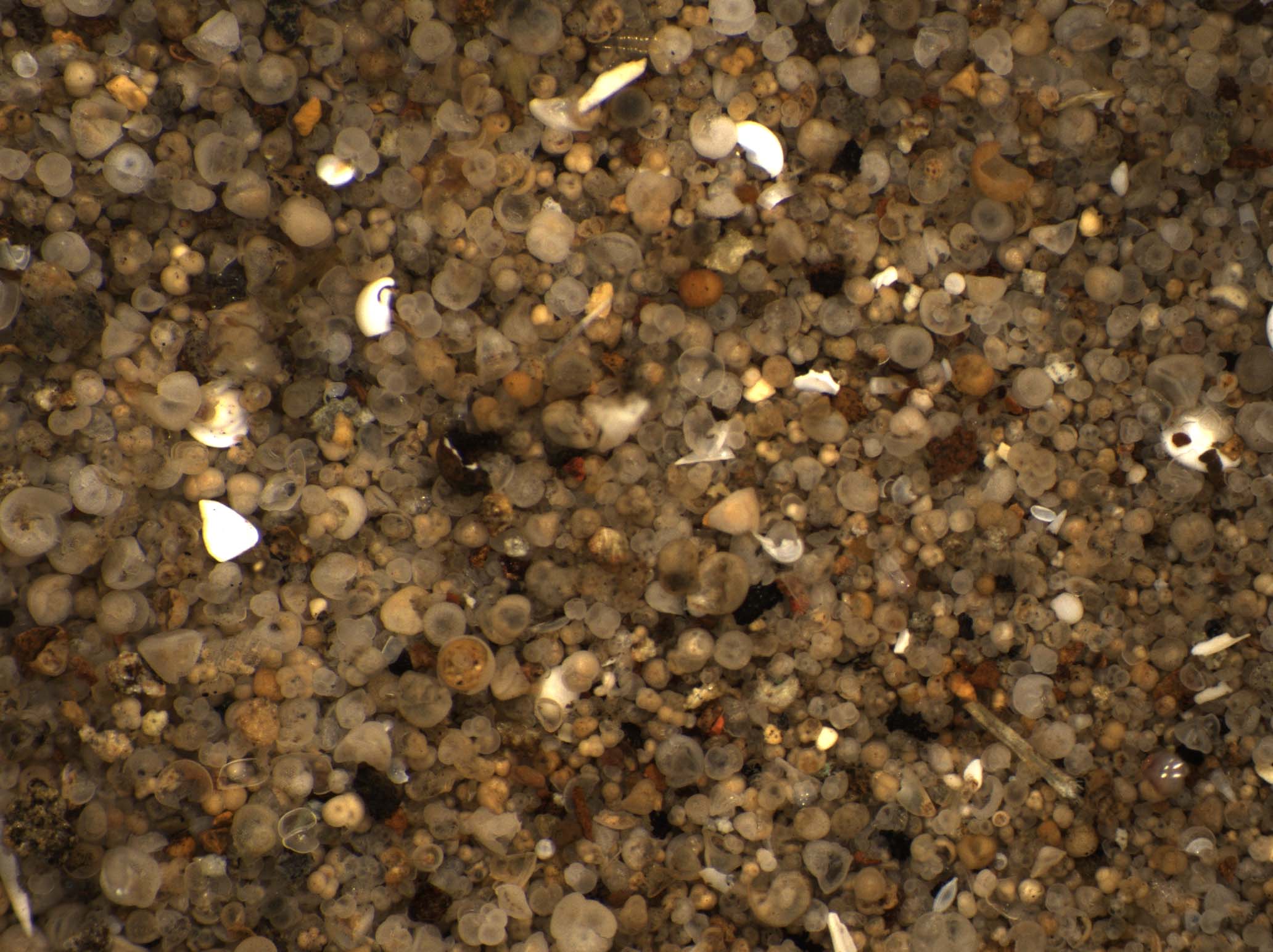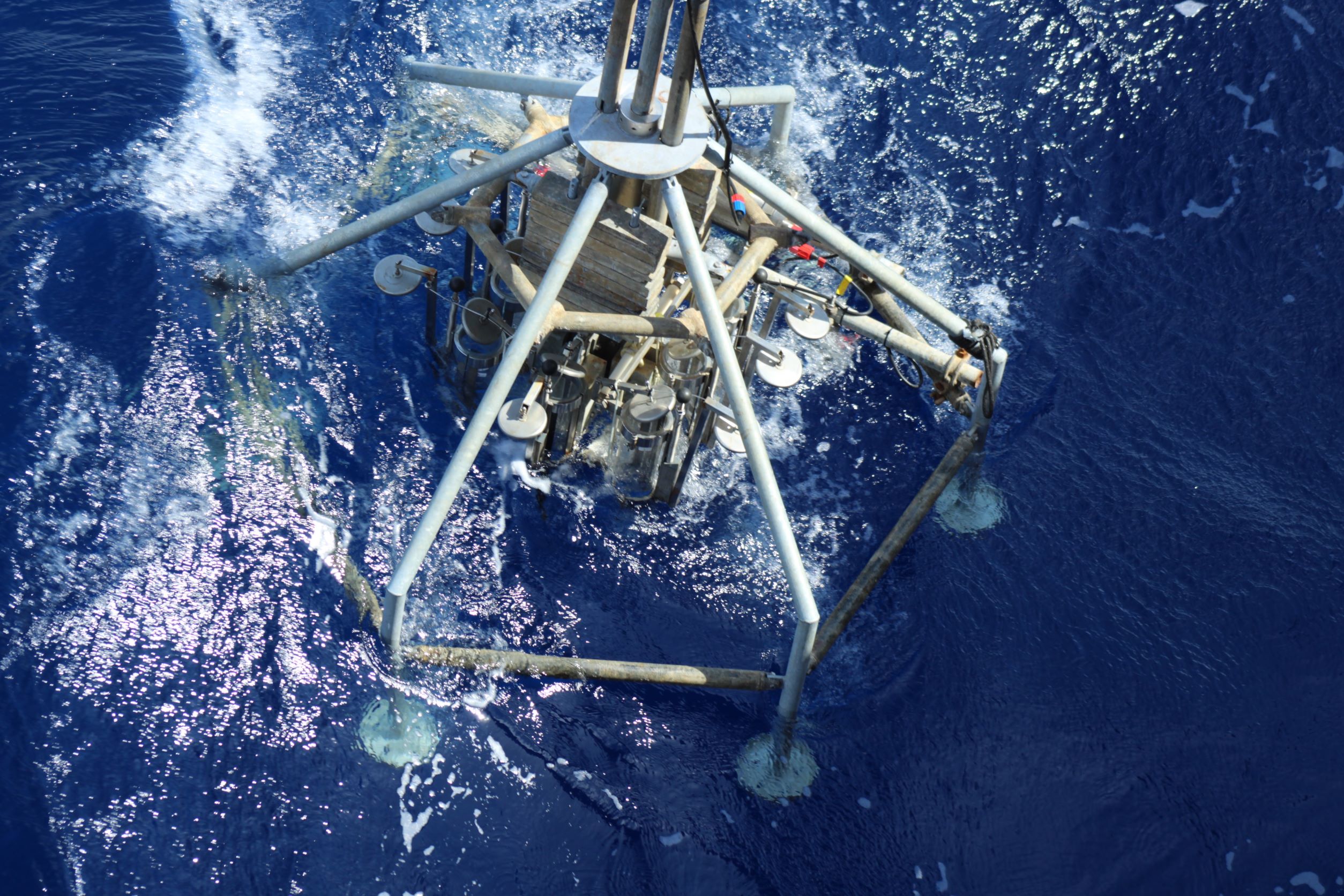It is the fourth day since we arrived at our research location in the middle of the Atlantic: The Rainbow Plume. The Multicorer, or short “MUC” just arrived its final destination at 2300m water depth. Now the wire that holds the MUC tightens again and the winch slowly starts pulling the device back on board. It will take about an hour and I am impatiently waiting to get my samples. The MUC is a metal framework that is used to push short plastic tubes into the seafloor to collect sediment samples.

Inside and on top off the sediments there lives a group of small microorganisms called benthic foraminifera (example at fig. 4). Foraminifera are a very diverse class of small unicellular organisms that are typically covered by a shell or “test” and they are very interesting from many different points of view. Foraminifera are uniquely adapted to different (sometimes extreme) environmental conditions. They are distributed everywhere in the ocean from intertidal environments onto the deepest sea like the challenger deep in 10 km water depth. Their unique adaptations to some environments makes them interesting for biologists and the fact that their shells are usually well preserved as microfossils in the sedimentary record makes them very important for micropaleontologists that try to reconstruct the past environmental conditions in our oceans.
The shells incorporate the chemical signature of the water from the habitat where the foraminifers lived. If we analyze the chemical composition of the shells, we can reconstruct parameters such as temperature or pH from the time the foraminifer was alive. In addition, the species composition of the foraminiferal assemblages provides a lot of information about the environment. That is why I try to study how the species composition changes with the distance from the hydrothermal vent. I preserve the sediments in ethanol mixed with a dye called Rose Bengal. Rose Bengal stains the foraminifers that lived during the sampling and they appear in a deep pink. When we arrive back at home, we will analyze which foraminiferal species have the preference to live closer to the hydrothermal vents. These species might be a good indicator for past hydrothermal activity. In addition, we will be able to analyze the chemical composition of the shells that belong to foraminifera living close close to the vents to identify a possible chemical signature for hydrothermal activity.

Finally, I already try to find some living benthic foraminifera here on board to analyze their intracellular nutrient storage. Some benthic foraminifera tend to accumulate huge amounts of phosphate and nitrate within their cells and I am interested if the species that live close to the hydrothermal vents have a similar behavior. It turned out, that finding living individuals in these sediments is like finding a needle in a haystack. I am looking at the sand fraction of the sediments through a stereomicroscope. Life is scarce on the deep ocean, though, and to find a living little critter I have to go through thousands of small empty shells (Fig.4). This needs some patience but is even more rewarding when I finally found what I was looking for.


